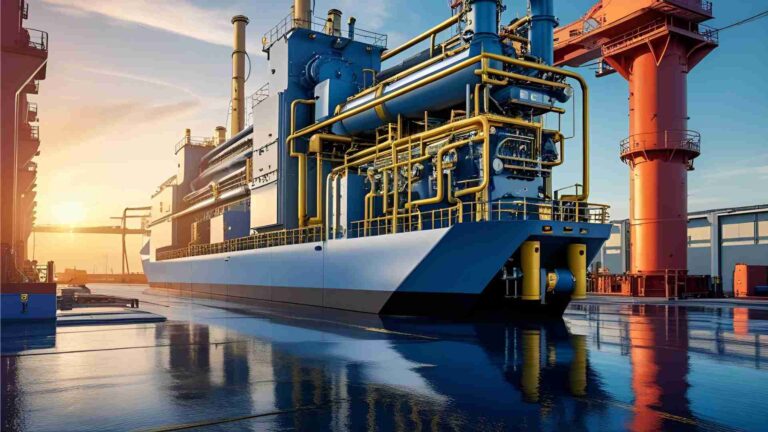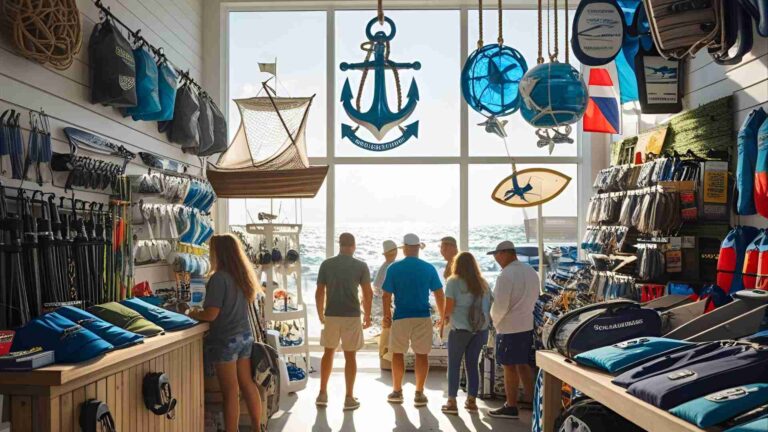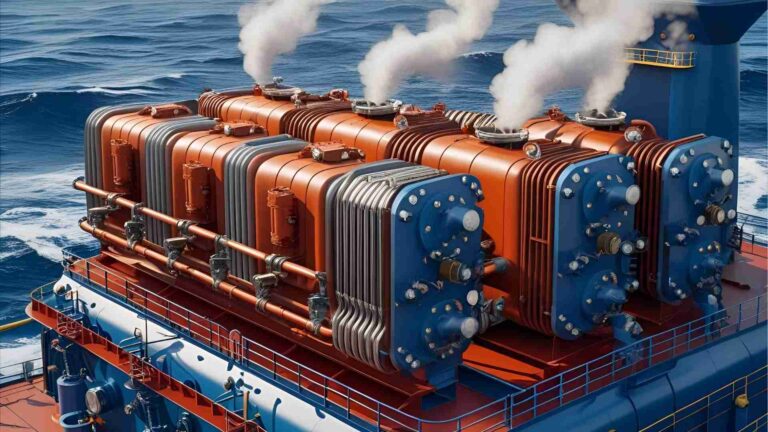Understanding the Fire Safety Systems (FSS) Code for Ships
Introduction to the FSS Code
The Fire Safety Systems (FSS) Code stands as a foundational pillar in maritime safety, establishing mandatory international standards for fire prevention, detection, and suppression on ships. Integrated into the International Convention for the Safety of Life at Sea (SOLAS), particularly Chapter II-2, the FSS Code provides detailed engineering specifications for fire safety equipment and systems. Its primary objective is to minimize fire risks, protect lives, safeguard vessels and cargo, and ensure consistent global application of safety measures across passenger ships, cargo vessels, tankers, and specialized offshore units.
Fires onboard ships represent one of the most severe hazards due to limited resources, confined spaces, and the potential for rapid escalation. The FSS Code addresses this by mandating systems that enable early detection, effective suppression, and safe evacuation. It applies to ships constructed after specific regulatory thresholds, with requirements varying by vessel type, size, and fire risk profile. For maritime students, cadets, and professionals, mastering the FSS Code is essential for operational readiness and compliance.
The code comprises 15 chapters, each focusing on specific aspects of fire safety. These range from general definitions and personal protective equipment to advanced systems like inert gas installations on tankers. By standardizing technical requirements, the FSS Code facilitates manufacturing, installation, inspection, and certification processes, ensuring equipment reliability under extreme conditions.
Overview of Fire Safety Principles on Ships
Fire safety on ships revolves around four core principles: prevention, detection, containment, and extinction. Prevention involves identifying hazards like flammable materials in engine rooms or cargo holds and implementing controls such as proper storage and electrical safeguards. Detection relies on sensors and alarms for early warning. Containment uses fire-resistant boundaries, dampers, and ventilation controls to limit spread. Extinction employs portable and fixed systems to suppress flames.
The FSS Code enforces these principles through precise specifications. For instance, it requires ships to maintain firefighting capabilities even if main systems fail, emphasizing redundancy. Crew training and drills are integral, ensuring proficiency in using equipment and following procedures. Non-compliance can lead to severe consequences, including vessel detention or accidents.
To illustrate the interconnectedness of fire safety systems, consider the following flowchart depicting a typical fire response sequence on a ship:

This diagram highlights how chapters of the FSS Code integrate into a cohesive response strategy.
The 15 Chapters of the FSS Code: Detailed Breakdown
The FSS Code is organized into 15 chapters, each providing engineering specifications, installation guidelines, and performance standards. Below is a comprehensive table summarizing the chapters, their focus, and key requirements:
| Chapter | Title | Key Focus and Specifications |
|---|---|---|
| 1 | General Definitions | Defines terms like “fire load,” “control station,” and “low flame spread” for uniform interpretation. Ensures transparency in implementation. |
| 2 | International Shore Connections | Specifies dimensions (flange outer diameter: 178 mm; bolt circle: 132 mm) and materials (corrosion-resistant alloys) for shore-to-ship firefighting connections. Requires at least one per ship side. |
| 3 | Personnel Protection | Details firefighters’ outfits: heat-resistant suits (withstanding 1,000°C for short periods), gloves, boots, helmets. Breathing apparatus (SCBA) must provide 30-60 minutes of air at 40 L/min. EEBDs: 10-minute minimum duration, placed in accommodations and machinery spaces. |
| 4 | Fire Extinguishers | Covers portable types: CO2 (min. 5 kg), foam (9 L), dry powder (12 kg). Recharging protocols; foam applicators for oil fires. Placement: one per 30 m in corridors. |
| 5 | Fixed Gas Fire-Extinguishing Systems | CO2 systems: discharge 85% gas in 2 minutes for machinery spaces; cylinder storage outside protected areas. Inert gas alternatives for non-toxic suppression. Controls: audible alarms before release. |
| 6 | Fixed Foam Fire-Extinguishing Systems | High-expansion foam: 1,000:1 ratio; low-expansion: 12:1. Application rate: 6 L/m²/min for oil fires. Monitors and applicators for deck use on tankers. |
| 7 | Fixed Pressure Water-Spraying and Water-Mist Fire-Extinguishing Systems | Water mist: droplet size <1,000 μm; pressure 0.35-1.0 MPa. Coverage: entire protected area within 10 minutes. Suitable for electrical fires. |
| 8 | Automatic Sprinkler, Fire Detection, and Fire Alarm Systems | Sprinklers activate at 68-79°C; spacing max. 4 m. Alarms integrate with public address systems. Testing: simulated heat sources. |
| 9 | Fixed Fire Detection and Fire Alarm Systems | Smoke/heat detectors: response time <30 seconds. Zoning: max. 50 detectors per zone. Power: dual supply with automatic switchover. |
| 10 | Sample Extraction Smoke Detection Systems | Extracts air from holds; sensitivity: 0.005-0.02% obscuration/m. Fan capacity: 2,000 m³/h min. for large spaces. |
| 11 | Low-Location Lighting Systems | Intensity: 1 lux min.; duration: 60 minutes on emergency power. Placement: 300 mm above deck along escape routes. |
| 12 | Fixed Emergency Fire Pumps | Capacity: 25 m³/h for ships >2,000 GT; pressure: 0.27 N/mm². Independent diesel drive; fuel for 18 hours total. |
| 13 | Means of Escape | Stairways: min. 800 mm wide; doors: open in escape direction. Two routes from every space; signage illuminated. |
| 14 | Fixed Deck Foam Systems | Foam solution: 0.6% concentration; monitors: 50 m throw distance. Isolation valves for system segmentation. |
| 15 | Inert Gas Systems | For tankers >8,000 DWT; O2 content <8%; blower capacity: 125% of cargo discharge rate. Alarms for high O2 levels. |
This table encapsulates the code’s structure, enabling quick reference for compliance checks.
Chapter 1: General Definitions and Application
Chapter 1 sets the groundwork by defining key terms, ensuring all stakeholders interpret requirements uniformly. For example, “A-class divisions” are fire-resistant bulkheads rated for 60 minutes of integrity. The chapter clarifies applicability: mandatory for SOLAS-compliant ships, with exemptions for small vessels under flag state discretion.
Chapters 2-4: Connections, Protection, and Portable Equipment
Chapter 2 ensures interoperability with shore facilities via standardized connections, critical during port fires. Materials must withstand 10 bar pressure.
Chapter 3 emphasizes personal safety. Firefighters’ outfits include SCBA with a minimum air supply of 1,200 liters, tested annually. EEBDs, lightweight hoods with filters, are vital for escape from toxic smoke.
Chapter 4 specifies extinguisher types by fire class (A: solids, B: liquids, C: gases, D: metals, E: electrical). Capacities range from 2 kg for powder to 135 L for wheeled foam units. Maintenance involves hydrostatic testing every 5 years.
Chapters 5-7: Fixed Extinguishing Systems
These chapters address automated suppression. Gas systems (Chapter 5) like CO2 displace oxygen to below 15%, extinguishing flames. Installation requires cylinders in dedicated rooms with ventilation interlocks.
Foam systems (Chapter 6) form barriers over fuels; high-expansion types fill spaces rapidly, ideal for hangars.
Water-based systems (Chapter 7) use mist for cooling without conductive risks. Performance: suppress Class B fires in 5 minutes.
To visualize fixed system integration, here’s a diagram:

Chapters 8-10: Detection and Alarm Systems
Detection is paramount for early intervention. Automatic sprinklers (Chapter 8) integrate detection and suppression, with heads spaced to cover 130 m² max.
Fixed alarms (Chapter 9) require visual indicators in high-noise areas (>85 dB). Systems must self-monitor for faults.
Sample extraction (Chapter 10) is crucial for enclosed holds, drawing air to central analyzers for continuous monitoring.
Chapters 11-13: Escape and Emergency Support
Low-location lighting (Chapter 11) guides evacuees in smoke; photoluminescent strips or LEDs ensure visibility.
Emergency pumps (Chapter 12) provide backup water supply. Detailed below.
Escape means (Chapter 13) mandate dead-end corridors <7 m and assembly stations for all aboard.
Chapters 14-15: Specialized Systems
Deck foam (Chapter 14) protects tanker decks; systems deliver 1,000 L/min per monitor.
Inert gas (Chapter 15) prevents explosions in tanks by maintaining inert atmospheres.
Fire Main Systems
Fire main systems form the core of onboard firefighting, delivering seawater via pumps, pipes, and hydrants. The FSS Code requires at least two independent pumps, each capable of supplying two jets at 0.27 N/mm² pressure. Hydrants are positioned for full coverage, with hoses (min. 10 m length, 38 mm diameter) and dual-mode nozzles.
Maintenance: Weekly tests, annual pressure checks. Systems must handle vessel motions up to 15° list.
Table of Pump Specifications by Vessel Type:
| Vessel Type | Min. Pumps | Capacity (m³/h) | Pressure (N/mm²) |
|---|---|---|---|
| Cargo >2,000 GT | 2 | 25 | 0.27 |
| Passenger <1,000 GT | 2 | 25 | 0.27 |
| Cargo <2,000 GT | 1 (with backup) | 15 | 0.27 |
| Tankers | 3 | 40% of total | 0.35 |
Fixed Fire Extinguishing Systems
These target high-risk areas. CO2 systems: quantity based on space volume (0.56 kg/m³ for machinery). Foam: concentration 3-6% for AFFF. Water mist: flow 0.1 L/m²/min.
Installation: Piping corrosion-resistant; controls remote-accessible.
Fire Detection and Alarm Systems
Detectors: Smoke (ionization/optical), heat (fixed/rate-of-rise), flame (IR/UV). Configuration: Zoned for quick localization. Alarms: 85 dB min., with strobes.
Maintenance: Monthly tests, sensor cleaning.
Smoke Control and Ventilation
Systems extract smoke at 25 air changes/hour in corridors. Dampers: Auto-close at 70°C. Pressurization: Maintain 25 Pa differential in stairwells.
Means of Escape
Routes: Primary/secondary, min. width based on occupants (0.6 m/person). Lighting: 15 lux on floors, 60-minute backup.
Evacuation plans: Posted, with drills quarterly.
Firefighters’ Outfits
Outfits: 2-4 per ship, including suits (EN 469 compliant), SCBA (EN 137). Additional: Axes, radios, thermal cameras.
Storage: Accessible, humidity-controlled.
Emergency Fire Pumps
Emergency fire pumps are vital backups, independent of main power. Fundamentals: Deliver water when mains fail, located outside machinery spaces.
Capacity: 40% of total fire pumps; min. 25 m³/h for large ships. Pressure: Match mains at highest hydrants.
Suction: Independent sea chests; head limit 6 m under worst conditions (15° list).
Power: Diesel engines, manual start at 0°C; 6 starts/30 min. Fuel: 3-hour tank + 15-hour reserve, flashpoint >43°C.
Installation: A-60 insulated spaces, airlock access.
Integration: Isolating valves segment mains; relief valves prevent overpressure.
Testing: Weekly starts, annual flow tests.
Table of Emergency Pump Requirements:
| Parameter | Specification | Notes |
|---|---|---|
| Startup Time | <45 seconds | Even in cold weather |
| Fuel Capacity | 18 hours total | External storage |
| Suction Pipe | 11 mm wall thickness | Short machinery penetration |
| Engine Starts | 6 in 30 min | Manual crank option |
Troubleshooting: Common issues include fuel contamination (flush lines), cavitation (check suction), starting failures (battery checks).
Innovations: Remote monitoring, hybrid batteries for eco-compliance.
Updates and Amendments
The FSS Code evolves with technology, incorporating infrared detection, enhanced water mist, and stricter training. Amendments strengthen systems against false alarms and improve reliability.
Challenges and Best Practices
Challenges: Crew unfamiliarity, maintenance lapses, cost barriers. Solutions: Regular audits, training programs.
Best Practices: Monthly drills, preventive maintenance, IMO updates. Ensure classification society certifications.
Frequently Asked Questions
The FSS Code (Fire Safety Systems Code) is an international standard under SOLAS Chapter II-2 that provides mandatory technical specifications for fire detection, suppression, and protection systems on ships. It ensures global consistency in firefighting equipment and emergency response.
The FSS Code contains 15 chapters, covering everything from international shore connections and firefighters’ outfits to fixed CO₂ systems, water mist, inert gas systems, and means of escape.
An Emergency Escape Breathing Device (EEBD) is a portable air supply unit required under Chapter 3 of the FSS Code. It provides at least 10 minutes of breathable air to help crew escape smoke-filled or toxic areas during a fire.
Under Chapter 12, emergency fire pumps must:
Deliver 25 m³/h (for ships >2,000 GT) at 0.27 N/mm² pressure
Be independently powered (usually diesel)
Start within 45 seconds
Operate under 15° list and adverse conditions
Have 18 hours of fuel (3h onboard + 15h reserve)
The FSS Code is mandatory for all SOLAS-compliant vessels, including:
Passenger ships
Cargo ships over 500 GT
Tankers (with additional inert gas requirements)
Offshore supply vessels and special purpose ships It applies to ships built on or after 1 July 2002, with retroactive requirements for certain systems.
Conclusion
The FSS Code remains the cornerstone of maritime fire safety, mandating robust systems for detection, suppression, and escape across 15 comprehensive chapters. By enforcing standardized engineering specifications under SOLAS, it minimizes fire risks, protects lives, and ensures operational resilience on passenger ships, tankers, and cargo vessels worldwide. For cadets, officers, and operators, compliance through regular drills, maintenance, and training is non-negotiable. Mastering the FSS Code not only meets regulatory demands but elevates safety culture at sea-where prevention and preparedness save lives. Stay updated, stay compliant, stay safe.
Happy Boating!
Share Understanding the Fire Safety Systems (FSS) Code for Ships with your friends and leave a comment below with your thoughts.
Read Marine Refrigeration System On Ships until we meet in the next article.






